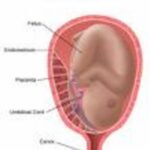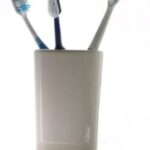Breathing is the most basic of human functions. Although the placenta is responsible for respiration in the womb, pre-born babies display the breathing reflex early on (2). At the time of birth we take out first breath of air and it is estimated that the average human takes over four billion breaths during the course of their life (2). It should come as no surprise that this vital function is capable of influencing many aspects of our lives.
When we are infants breathing is an uncontrollable function. As grow older we learn to control our breathing. Also as we grow we are introduced to myriad forms of external stress. As adults we forget about breathing – it’s just something we do and is something we no longer think about. Things like daily commutes, our careers, our various relationships all take over, add stress to our lives, and push any concern for breathing to the back of out mind. Over time we develop bad breathing habits, which can cause a host of problems. The most common type of incorrect breathing is known as “chest breathing” – when the chest puffs out when you inhale (1). Chest breathing isn’t optimal as it doesn’t involve in entire capacity of the lungs and it causes undue stress on the musculature of the shoulders and upper back (1). This stress on the shoulders and upper back creates tension which radiates to the neck and can cause headaches (2). Also, with less oxygen in the blood stream (because the whole lungs aren’t being used to breath), people who chest breathe usually don’t perform at optimal levels in terms of athletic ability or cognitive function (2). There is also a strong correlation between increased levels of emotional stress and chest breathing. (2)
Dr. Nimal Rajapakse explains in his article “The Science of Meditation” that abdominal breathing has numerous benefits. These include (but are not limited to) increased oxygen in the blood – which improves the supply of oxygen to the muscles and brain, improving athletic and cognitive function -, decreases perspiration, reduces stress and teaches the body to better handle physical and emotional stress, alleviates asthma symptoms, improved fat metabolism, improved stamina, improved immune system function, better relaxation, and creates a general sense of well being (1). On a more esoteric level abdominal breathing is used all over the world to increase levels of internal energy (Qi, Prana, Odic Force, LVX, ect…), alter consciousness, and commune with Deity (3).
In this article I will introduce two basic forms of abdominal breathing: Buddhist Breathing and Taoist Breathing. These form the basis of all of abdominal breathing exercises and are extremely simple to learn.
1) “Buddhist Breathing” – Sit or stand in a comfortable, natural position. Make sure to keep you spine erect and allow it maintain its natural curve. Place you tongue to the roof of your mouth just behind your teeth. All breathing will be done with your nose. As you inhale do not allow your chest to puff out, instead, have your lower abdomen extend. This will have the effect of filling your entire lungs with air. As you exhale draw your lower abdomen back in as you are drawing your belly button back towards your spine. Again, make sure you relax. This breathing method is great for relaxation and it is a good idea to use it in conjunction with a claming meditation practice or prayer. (3)
2) “Taoist Breathing” – Start off this method in the same manner as “Buddhist Breathing”, however, your abdominal action will be the exact opposite. As you inhale draw your lower abdomen inward as though trying to pull your belly button towards your spine. Upon exhalation let your lower abdomen return to its normal position. This method is especially useful if you are in need of a boost of energy or are engaged in sporting activity. (3)
Throughout the day you should make it a point to breathe in the Buddhist manner as much as possible, until it becomes second nature and you no longer have to think about it – it should become you normal method of breathing. Taoist breathing is useful in the morning but you should take up the practice only after you have mastered Buddhist Breathing.
Have fun and work hard.
Sources:
1. Rajapakse, Nimal PH.D. “The Science of Meditation”, Mihintalava, 2003. http://www.lakehouse.lk/minitalava/index/htm
2. American Medical Student Association, “Health Hint: Breathing Exercises”, 2003. http://www.amsa.org/healingthehealer/breathing.cfm
3. Yang, Jwing Ming, “Qigong for Health and Martial Arts” 1998, http://www.amazon.com/Qigong-Health-Martial-Arts-Second/dp/1886969574http://metaboxing.blogspot.com/




